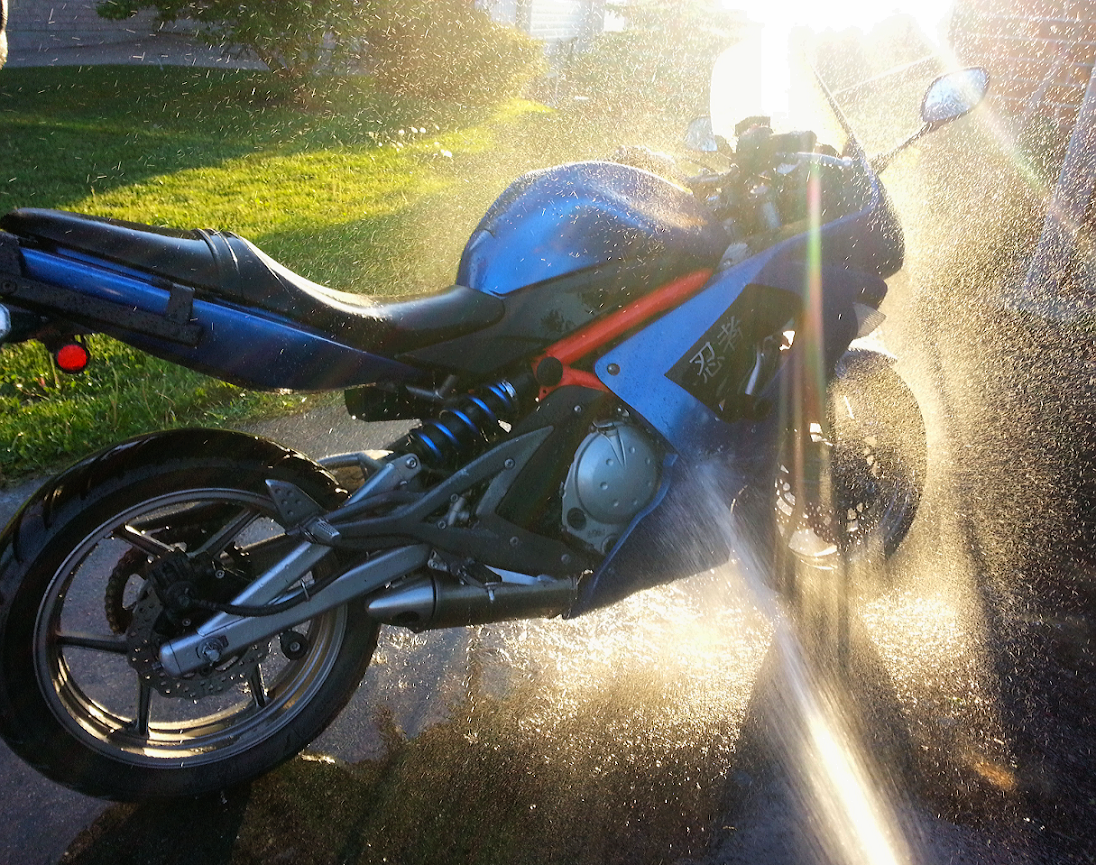 Last week a pair of Alpinestar boots popped up on Kijiji that happened to be just my size. The Alpinestars I have are totally next level, so the chance to own a second pair for the price of tax on a new pair was impossible to ignore.
Last week a pair of Alpinestar boots popped up on Kijiji that happened to be just my size. The Alpinestars I have are totally next level, so the chance to own a second pair for the price of tax on a new pair was impossible to ignore.
A ride over to Kitchener on an idyllic Sunday morning and I’m the proud owner of my second pair of Alpinestars, this time for twenty five bucks. Only used for a season, and in fantastic shape, they’re waterproof and much better for wet/cold weather than the summer boots I currently have.
*** Kijiji Part 2

 I love riding with a purpose. Today I went to Guelph and then Orangeville to check out two dual sport bikes. I’m looking for something as different as possible from the Concours, so a light-weight off-road focused enduro machine fits the bill.
I love riding with a purpose. Today I went to Guelph and then Orangeville to check out two dual sport bikes. I’m looking for something as different as possible from the Concours, so a light-weight off-road focused enduro machine fits the bill.
The first bike is a 2007 Kawasaki KLX-250. 250ccs is on the small side, but this is a very light bike. At 298lbs, it’s 374(!)lbs lighter than the Concours. It barely makes any noise, felt spritely and has a radically different riding position. No windscreens, very open and a tall riding stance. It’s been immaculately cared for by the original owner and comes with all the right farkles. You couldn’t ask for a nicer machine and it’s much newer than I thought I could afford. If I’m worried about the power, there are always options to buff up the bike.
It’s a bonus when you hit it off with the owner and end up having a good chat. He is an experienced trails rider who offered up all sorts of good advice about where and how to do it. As he said, this is the ideal bike to learn on. I may eventually want a more powerful bike, but as a starter this one is as good as it gets.
 After a ride over to the Forks of the Credit, and a quality coffee atHigher Ground, I rode the Forks for the first time on the Concours (which always feels lighter than it is in a Millennium Falcon kind of way), and then headed up to Orangeville.
After a ride over to the Forks of the Credit, and a quality coffee atHigher Ground, I rode the Forks for the first time on the Concours (which always feels lighter than it is in a Millennium Falcon kind of way), and then headed up to Orangeville.

The XT350 looked like the ideal bike. Air cooled, super light weight, with a medium displacement, but this one was a poor example. It looked like it had led a life that alternated between abuse and neglect. Not only was it filthy, but it looked like it was going to rust through in some expensive places. It didn’t start and after a dozen or so kicks, when it finally did fire up it sounded like a tractor. It couldn’t have been more different to the only marginally more expensive, lower kilometer, six year newer, much loved, whisper quiet KLX. I’ll trade a few cc’s for a bike that won’t strand me deep in the woods any day.I emailed the owner of the KLX standing on the street as the XT owner tried to get it started again and told him I’m all in. It’s nice when the right thing falls into your lap just when you need it, and in my case that always seems to be a Kawasaki. The KLX will be my third Kawi (though my first green one). I can’t wait to get to know it.
 The Tiger was resplendent with its new engine guard and fired up at the touch of the button after its long winter hibernation. The last time it was out was mid-November, so this year was actually a 4+ month hibernation. Newly lubed cables and well sorted details meant it felt smooth and responsive after so long in the garage. Do I ever miss the power to weight ratio of a bike when I can’t ride. Slicing through air barely above freezing was bracing, and as I crossed to the north side of the river I came upon a bison farm.
The Tiger was resplendent with its new engine guard and fired up at the touch of the button after its long winter hibernation. The last time it was out was mid-November, so this year was actually a 4+ month hibernation. Newly lubed cables and well sorted details meant it felt smooth and responsive after so long in the garage. Do I ever miss the power to weight ratio of a bike when I can’t ride. Slicing through air barely above freezing was bracing, and as I crossed to the north side of the river I came upon a bison farm.
































































































































